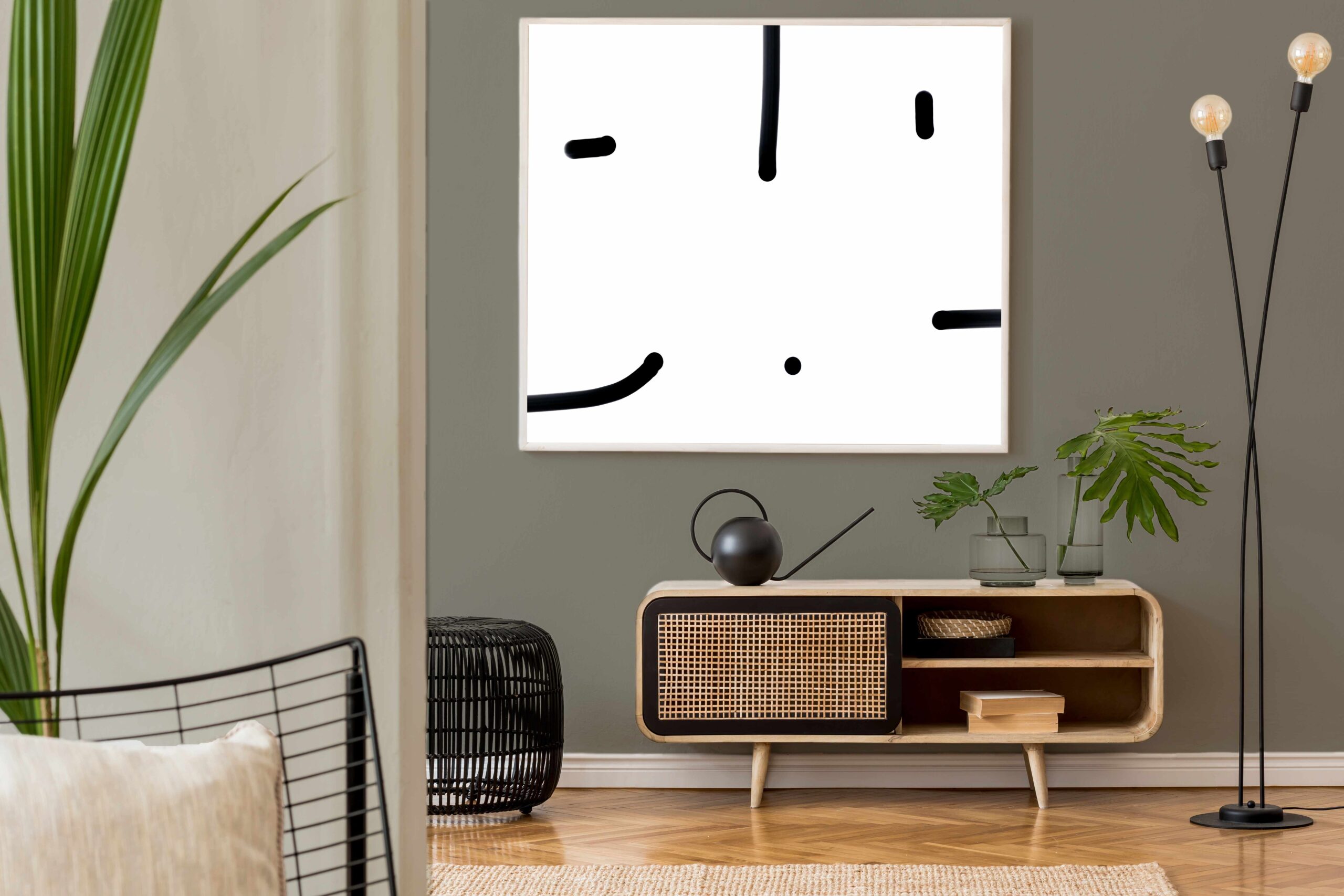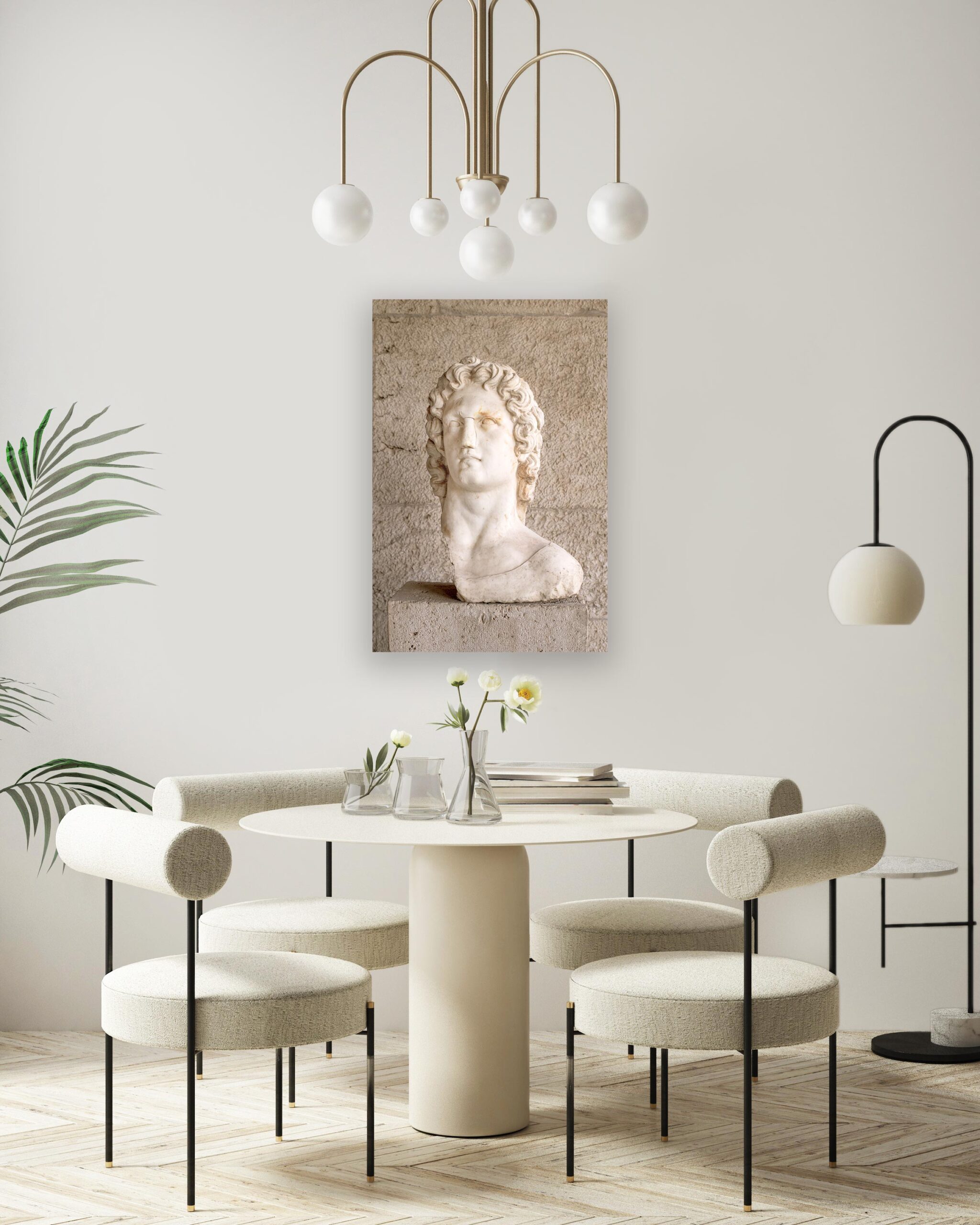Hang Your Artwork Wherever the Heck You Want
Breaking the rules when hanging art is an opportunity to make a statement that says, “I live life on my terms.” However, as with every aspect of decorating, it helps to understand the basic principles of how to hang art, then you can improvise. Although all it involves is a hammer and nail, hanging art is daunting, so let’s find out what the professionals have to say on the subject.
1. Nate Berkus, an American interior designer said, “People think that everything has to be symmetrical. They are obsessed with the idea that everything has to be balanced—which is not always the case.” Sometimes the more off-center the placement, the better, as seen in the above industrial living room.
2. Hang art at eye level. A general rule is the center of your artwork should be 155cm from the floor. This is regularly used as a standard in many galleries and museums. It also creates balance in the home because all of your art will share a visual midline. However, Le Corbusier insisted that his works were placed at 183cm from the floor, measured from the top of the painting.
3. Hang in groupings if the pieces are small and if you are curating a gallery wall, keep in mind that there needs to be a unifying factor: similar frames, similar subject matters, palette, or media. As long as something is unifying the grouping, you can hang whatever you like.
4. In the case of picture walls, if there are slight differences in the dimensions of the pieces, that rules out neat rows and columns. Instead, lay them out in an asymmetrical, sweeping shape on the floor, then hang them when you are happy with the result. A failproof method to keep the overall shape cohesive but not boring is to place each piece a neat 5cm from another. While a piece is 5cm from one neighboring piece, it might be farther away from another neighbor. The fun is in the irregularity, not in perfect measurements.
5. For great visual impact, consider a big piece for a small room.
6. Think beyond the wall. You can lean, prop and stand your artwork anywhere in the house, provided that they are safe from bumps and scratches. Smaller pieces can go on an easel or a bookshelf.
7. You buy your art because you are madly in love with it and hang it where you can feast your eyes on it each day, and one of the more interesting spots to hang art is in the kitchen or the WC. Keep in mind that moisture, heat, and direct sunlight will damage the artwork and it will need special glazes and seals to protect the art.
8. Golden Tip for architectural horizontal lines: Rather than line up the bottom of a frame with the architecture in a room, for example, a fire mantel—or with another painting—try to avoid perfect alignment.
9. Haning Tip for small-scale pieces: Intimate, small-scale pieces always look better hung lower so that you are looking down on them a bit. And when you want to display them along a staircase, begin at the midpoint and work out. Placing the works so that you have a new experience every couple of steps and never hit a spot of negative space.
Art is individualistic and subjective. Sometimes, you just need to follow your gut and take a chance with your hanging technique. Do the wrong thing and own it. Most important is to have fun with your art: re-arrange it frequently to keep it fresh – and enjoy it.
For a good read on hanging your art off-center click here ☞ https://tinyurl.com/4s4hdc4p
To read Christie’s how to hang artwork guidelines click here ☞ https://tinyurl.com/467c38bf
The artwork featured here ☞ What I Did Not Know – Limited Edition of 7








